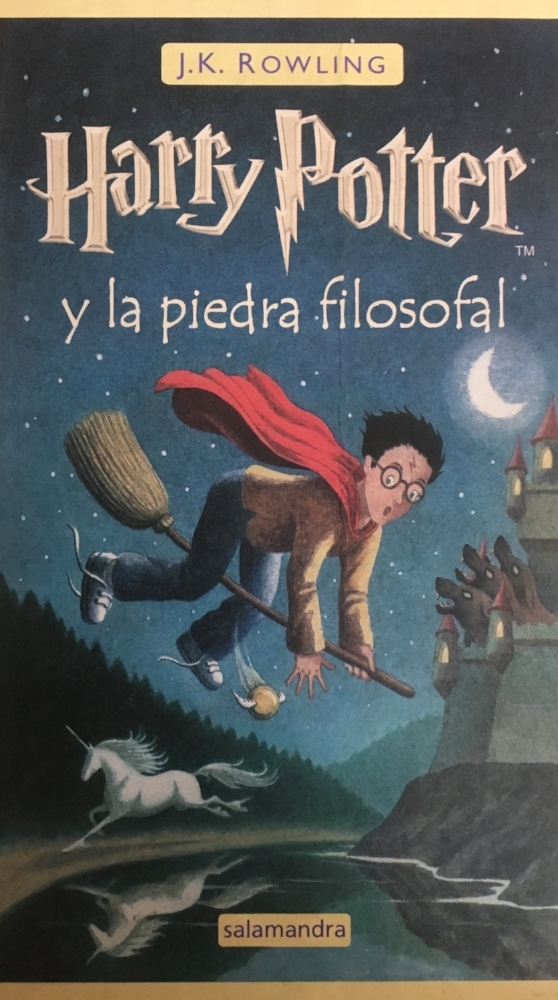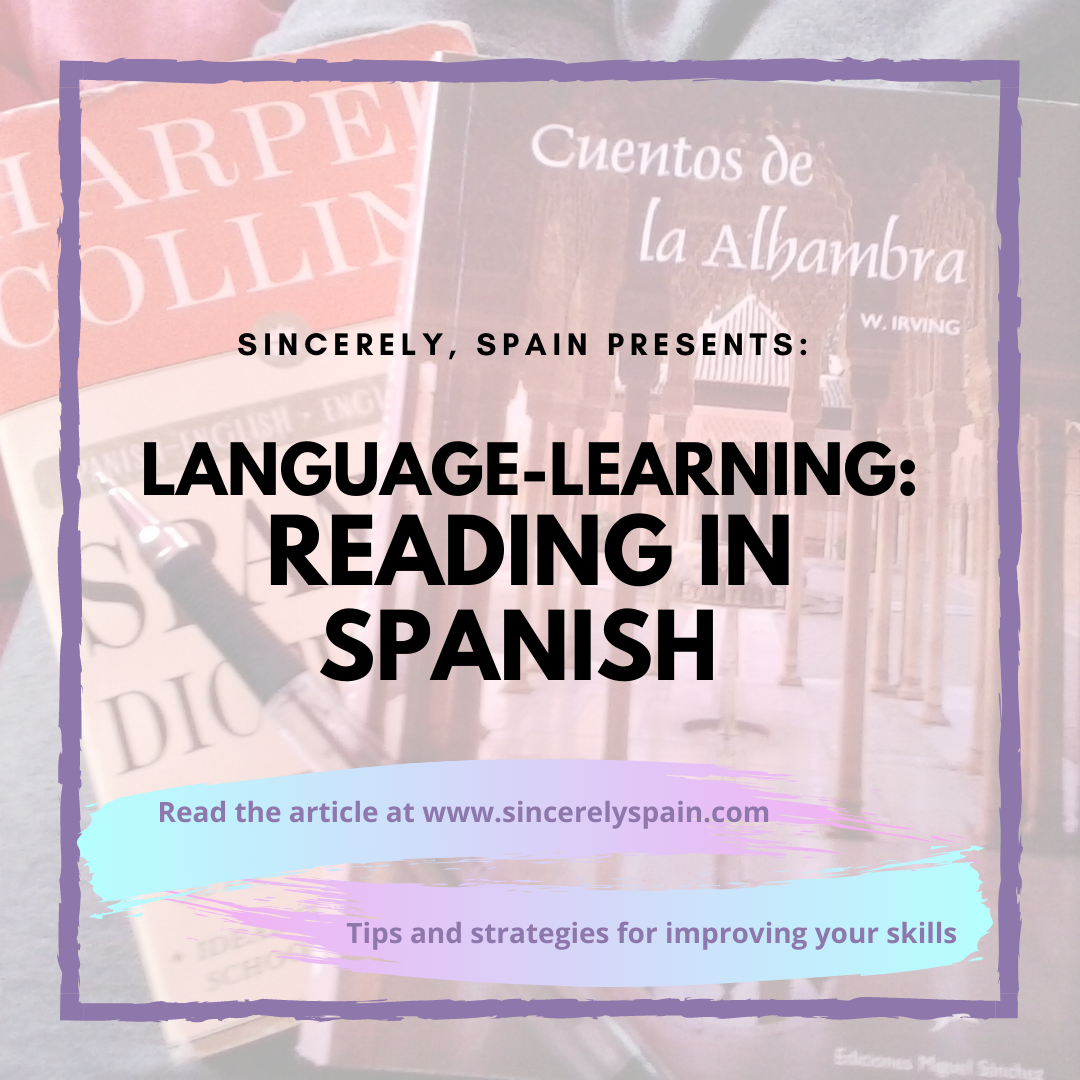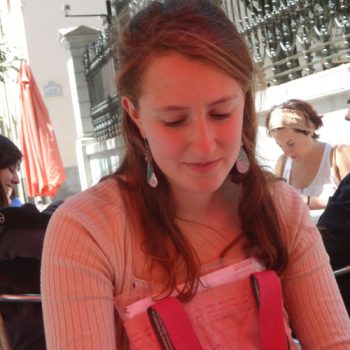
Language Learning: Reading in Spanish
Dear Rebecca,
While there are many different ways to learn a language, we firmly believe that implementing as many different methods as possible, until you find the right one, is a better option than just trying one or two different things. And, eve though we truly believe that living abroad—whether long term or for a study abroad—is the best way to improve your language skills, there are plenty of other things you can do to get ahead.
We’ve already talked about a bunch of these and you can find them here:
Individual or group language exchanges (intercambios in Spanish)—these are great because you can usually do them at home or abroad
Language learning at a language school
Watching TV or movies in Spanish
Learning through Entertainment
Using Duolingo to learn a language (what we are currently doing for Italian and Portuguese)
Other social ways to learn languages—such as doing yoga in Spanish or joining a sports team
Note: You may feel like many of these are not available to you now if you are social isolating, but you would be surprised! Many organizations that usually organize in-person intercambios are currently organizing virtual ones, like this one in Granada. Also, just like many musicians who are hosting virtual concerts, many yoga instructors and trainers are live-streaming classes right now. Why not engage with something you enjoy in Spanish?
Today, however, we want to talk to you about using books as a way to learn languages. Both of us have really enjoy this activity and have found that reading in Spanish has improved our vocabulary and grammar while allowing us insight into Spanish culture. Talking about how we chose the books we read, we discovered that there are several levels of reading in Spanish and we want to share them with you so you can decide where would be best for you to begin:
 Reading something easy for you
Reading something easy for you
When you first start learning a foreign language and decide you want to read in that language, it is better to pick a book that you can read than one that is so hard that you will never finish it. In fact, the first two books Claudia read in Spanish were translations, one from English and another from Italian, and one of them was really weird. At the same time, her vocabulary greatly improved (there are specific words that she learned from both of them that have stuck with her to this day) and so did her confidence.
Pro-tip: Pick something that you know you can finish. For example, Claudia has several of the Harry Potter books in Spanish. These are books that she has read multiple times in English so she’s already so comfortable with them that it doesn’t matter if she don’t understand everything. In this case it is just important to start and get comfortable with the process.
Reading well-known authors
After being here for awhile, we started talking to our friends about books and they recommended several well-known authors to us. So, we started reading what our friends were into and it not only made us more well-versed within the world of current Spanish literature, it also gave us insight into our friends’ lives. These books don’t necessarily have to be difficult, in fact, they are usually pretty easy to read—they are popular books.
Pro-Tip: There are quite a lot of Young Adult writers in Spain who are popular with people in their teens and twenties—think of His Dark Materials for Spaniards. Because they encompass a wide range of readers, they are not usually too complicated for a foreigner to read.
Reading classic texts in the original version
Most of the time, we like our books as we like our movies—in original version. Perhaps it seems strange, but the way we express ourselves changes across languages because a lot of things we say don’t exist exactly the same in other languages. This means that even a really good translation isn’t going to give you the exact same message as the original version. However, this also means that some of the classics you want to read are in old Spanish and are going to be harder to read than more current books.
Pro-Tip: If you are really set on reading a classic, but you are not sure you can make it through the whole thing, consider buying a copy with the English and Spanish version together (like this one that is the classic Don Quixote). Or buy two different copies and read them side-by-side. We have done this several times with different books and we are always surprised with how different they are at the end of the day.
Reading in a foreign language isn’t easy, no matter how good you are. However, as people who have had a fair amount of experience (reading everything from academic articles to children’s stories), we can tell you that it will get easier. In the meantime, don’t get down on yourself and recognise that you are doing something that is hard. And, if you are not a big reader, make sure you take it slow, giving yourself time to rest when you need it! Remember that it is tiring to live in a foreign language.
Confession: When started reading in Spanish, and all through school, we would read everything twice—the first time highlighting the words that were new, looking them up, and then reading it again. It took twice as long to read something, but we got a lot better (both at Spanish and reading) fast.
 If you’re looking for more specifics, check out this article in which we share some of our top recommendations for you! Let us know if you like to read in foreign languages and if you have any books that you think we should read in Spanish!
If you’re looking for more specifics, check out this article in which we share some of our top recommendations for you! Let us know if you like to read in foreign languages and if you have any books that you think we should read in Spanish!
Sincerely,
Spain




